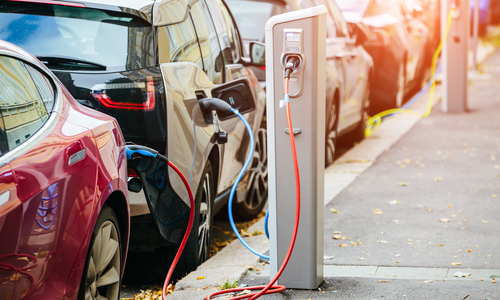SEPA seeks to aid utilities with integrating new technologies

The Smart Electric Power Alliance (SEPA) is developing four programs aimed at helping state regulators and other stakeholders transition into a future that could have more electric vehicles on the road.
The four programs are aimed at increasing the use of renewables in power generation while also preparing the electric grid to handle more electric vehicles.
These four programs or pathways “are critical to a smart transition to a carbon-free future,” SEPA said.
Announced last week, SEPA’s new Grid Integration and Utility Business Models programs are aimed at helping utilities and other related stakeholders integrate technologies such as solar, electric vehicle infrastructure, microgrids, distributed energy management systems, advanced inverters and battery storage into existing infrastructure and procedures.
These two programs come as SEPA unveiled the results of a member survey, 2019 Grid Integration Insights, in which SEPA examined the extent that members have been able to integrate these cutting-edge technologies.
“One of the greatest challenges facing the utility industry is the integration of increasing amounts of large-scale renewables and distributing distributed energy resources into existing grid infrastructure and operating practices. From large urban IOUs [investor-owned utilities] to small rural co-ops, continuing efforts to create a more responsive, adaptive, 2-way grid is at the forefront. SEPA is responding with our Grid Integration pathway, designed to provide the resources and community for our members to respond to these needs,” said SEPA President and CEO Julia Hamm.
The third program unveiled earlier in March was the Renovate Initiative, a multi-stakeholder task force consisting of nonprofits, state utility commissions and consumer and energy groups. The goal of the Renovate Initiative is to help regulators understand how to develop procedures that encourage utilities to deploy advanced technologies, such as advanced metering.
The task force will develop “problem statements” that encourage the task force to discuss how regulators can tackle issues such as how to modify the formal regulatory docket system to allow for stakeholders to address forward-looking issues, how to increase renewable energy sources and how to address the competing objectives of fair and reasonable rates versus customer choice, SEPA said. The task force will aim to come up with solutions to the problem statements by early 2020.
“This groundbreaking initiative will help address the challenges in meeting customer needs and increased expectations for a modern grid enabled by new technologies, while continuing to provide clean, affordable and reliable electric service,” said SEPA Managing Director Janet Gail Besser.
These three programs introduced last month build upon SEPA’s Transportation Electrification pathway and its electric vehicles working group. This program, which has been in existence since early 2017, consists of research initiatives and a monthly meeting or conference call where members discuss best practices on transportation electrification.
“We’ve worked very closely with our members through our working group to develop what we consider to be very good and innovative EV research. We will continue to leverage what I like to call a ‘brain trust,’” said Erika Myers, the principal heading the transportation electrification program.
The group helps develop research that provides data for regulators to help them make policy decisions on ways to integrate electric vehicles into their power systems.
“We find that our utility members are often inspired by the work that’s done in other utility service territories, and so a lot of times we find that they’ll reach out after seeing something published and get that firsthand knowledge and experience transferred from one utility to the next because certainly we don’t want to try to recreate the wheel in all these service territories,” Myers said.
For instance, the research the working group performed in 2017 on managed charging, a form of direct load control, helped some state regulators to draft policies that addressed installing managed charging capable-equipment, she said. The group is also looking into distribution planning best practices for utilities, which address how to accommodate high-speed charging for medium- and heavy-duty vehicles while minimizing the impact on the electricity system and the power grid.
“It’s in the very early days for things like managed charging because there’s still a lot of work that needs to be done, first to identify use cases and then determining the cost-benefits of implementing those use cases,” Myers said.
“Really, it’s all about future-proofing,” she said.
